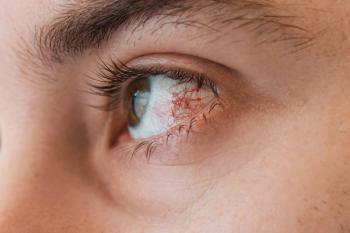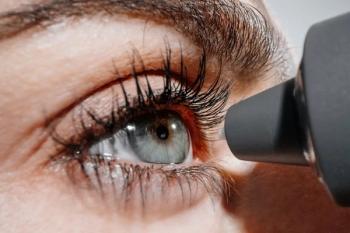
PL9643 effectively treats signs and symptoms of moderate to severe dry eye disease
Data on Palatin’s formulation PL9643 indicates clinical efficacy across multiple signs and symptoms of dry eye disease without sacrificing safety and tolerability.
The phase 2 and initial phase 3 trials (MELODY-1) of a dry eye treatment, PL9643 (Palatin), indicated that the formulation had positive effects on the signs and symptoms of dry eye disease. George W. Ousler, MS, an employee of Ora, Inc., reported the results at the Association for Research in Vision and Ophthalmology annual meeting. The topline finding of the studies was that PL9643 demonstrated consistent clinical efficacy across multiple signs and symptoms of dry eye along with excellent safety and tolerability.
PL9643 is a synthetic melanocortin receptor pan-agonist (not active at the melanocortin 2R) with anti-inflammatory ocular activity that is being investigated as a treatment for dry eye disease. The investigators explained that the melanocortin pathway plays an important role in resolving inflammation by promoting tissue healing processes and maintaining immunologic homeostasis. Melanocortin agonists may represent a new therapeutic avenue to treat inflammatory ocular diseases.
MELODY-1 studies
The studies were 12-week, randomized, double-masked, and vehicle-controlled designed to evaluate the efficacy and safety of PL9643 in patients with moderate to severe dry eye disease compared with vehicle and in a subpopulation of hyper-responders to the controlled adverse environment (CAE) challenge model.
The so-called “lead-in” population was comprised of the first 120 randomized patients. The investigators explained that the Ora CAE challenge model controls the environment for relative humidity, airflow, and visual tasking and was used to standardize the evaluation of signs and symptoms of dry eye disease.
The investigators reported that PL9643 was superior to vehicle, and for inferior corneal fluorescein staining, PL9643 trended toward superiority over vehicle. In the hyper-responder population at 12 weeks and using a visual analog scale, PL9643 was superior to vehicle for pain and trended toward superiority for eye discomfort and eye dryness compared with vehicle. Topical PL9643 was well-tolerated and adverse events were unremarkable.
Study takeaways
PL9643 has a novel mechanism of action and potentially protects the ocular surface from the damaging effects of inflammation and helps resolve ongoing inflammation.
Based on the positive results from both phase 2 and phase 3 initial results, and the successful utilization of the Ora CAE challenge, the PL9643 Melody-1 phase 3 clinical trial is continuing to enroll patients with dry eye symptoms.
PL9643 was effective across multiple clinical signs and reduced symptomatic ocular pain indicating that PL9643 is having a positive effect across multiple regions of the eye, offering a potentially differentiating efficacy profile from currently available treatments for dry eye disease.
The safety results from the phase 2 and initial phase 3 studies showed no ocular adverse events related to PL9643, and no patients discontinued use of the study drug because of tolerability issues.
The final results from the phase 3 study are expected in the second half of 2023.
Newsletter
Want more insights like this? Subscribe to Optometry Times and get clinical pearls and practice tips delivered straight to your inbox.



















































.png)


